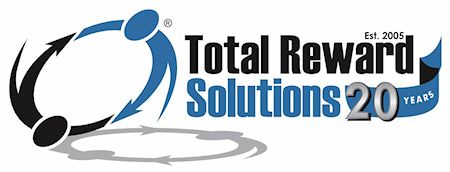April 14, 2015
No matter which types of employee incentive compensation programs you implement to elevate staff and corporate performance, there are certain key parameters you’ll need to establish. For instance, you’ll need to determine who is eligible for participation and how their rewards will be measured. These, along with 5 other plan essentials, can make or break the success of your incentive program, and possibly your overall corporate success. Let’s take a brief look at these critical incentive plan components:
Eligibility
When determining which employees are eligible for a particular corporate incentive program, there are two primary criteria to consider:
- Who is eligible (all employees, full-time only, part-timers, temporary staff, etc.)?
- When does each type of employee become eligible? This may involve rules for factoring in when new employees can receive their first payout, as well as when those leaving or retiring from the organization receive their final payouts. This parameter should also define whether payouts for partial-year participants are pro-rated.
Measures
How should your company’s employee compensation incentive program be measured to determine success and payouts? To make the plan understandable and manageable, focus on 3 to 5 measures that are directly aligned with – and tied to – key performance priorities. Measurement metrics should balance overall company performance with individual contributions toward that performance. Typical measures include some type of financial measurement, along with team and/or individual objectives, and other metrics related to key priorities.
Goals
Corporate goals must be clearly established and communicated in order for employees to understand and strive to achieve them. Goals should be realistic but encourage employees to stretch and “raise the bar”.
To accurately assess performance relative to these goals, you’ll need to establish performance levels such as threshold, target, and maximum. Threshold performance levels, for example, should be attainable 80-90% of the time, while target levels should be attainable 50-60% of the time, and maximum performance goal attainment should be reached 10-20% of the time. While the level of payout awarded to performers at each of these levels can be difficult to calculate, threshold is typically set at 80-90% of target performance with maximum at 110-120%.
Weights
Employee performance factors and corresponding measures are not created equal. That’s why weighting factors are typically applied in order for performance assessments and incentive payouts to fairly reward employees. Your plan should weight the most important parameters or business priorities accordingly. For example, one year overall business growth might be most important, while the next year the most critical goal might be profitability, cost containment or customer satisfaction. Weighting communicates priorities and direction, and reflects the desired result for the plan component. Your plan should seek to balance team and/or individual weights where appropriate. (This can be especially important in Customer Contact and Sales Compensation plans.) Keep in mind that multiple goals weighted within a parameter will only serve to diminish the effect of the weighting. Also, no individual parameter should be weighted at less than 10%.
Payout Levels and Amounts
How will each of your incentives pay out? Will you pay a flat dollar amount for some parameters? A flat percent of the plan or salary for others? Will you establish a payout table that pays a lower amount until you are closer to 100% of goal and then pays a lot more when you exceed 100% of that goal? Will you cap any of your payouts? Is there a point at which payouts end? These questions (and more) must be considered when setting up your incentive program.
Reward Payout Frequency
When determining optimum plan payout timing, keep in mind that your reward cycles should align with your business cycles and/or your overall plan purpose. You should also consider whether the payout amount earned in the identified time frame will sufficiently motivate the employee.
How often you pay incentive rewards could, of course, depend on the type of plan. For example, Gain Sharing or Goal Sharing Plans, as well as Management Bonus Plans, typically pay annually. Customer Contact Plans normally pay quarterly or monthly. Sales Compensation Plans typically pay quarterly or monthly depending on whether the plan is an incentive plan or a commission plan. You can also pay different parameters at different times; for instance, you could have a plan with both monthly and quarterly payout parameters.
Funding & Plan Modeling
For Goal Sharing plans, your company should first calculate the economic value related to achieving stated goals. You will then need to determine the level of reward based on that determined value.
A Gain Sharing plan, on the other hand, should pay for itself, as it is typically funded through corporate financial growth. Nonetheless, you will still need to determine the level of reward per eligible employee.
Always model your plans to ensure that sufficient funding is available. It is essential to understand upfront the likely total plan cost and be prepared to fund incentives at all levels of performance. By modeling different levels of performance, you can also determine the minimum level of financial performance needed to begin funding the plan.
Bottom Line:
Employee incentive program design and management is complex. It can also be a moving target, necessitating plan changes from one year to the next. Understanding the essential parameters I’ve described here can help you stay on solid ground for rewarding employees as they contribute to your company’s success. To learn more about how these parameters can impact your organization, contact me today at 317.589.8529. I’ll be glad to discuss your goals and how the right incentive programs can help you achieve them year after year.
